
Starting June 1st, 2023 Our warehouse fee will be $0.65/cubic foot per month
In effort to lower the warehouse storage fee during inflation, we have went narrow aisle racking.This construction took us four months but the project is finally completed. With narrow aisle racking, we are able to drop storage by 24%.We as partners will go through this inflation together.
08/07/2024
Port congestion is a critical issue that significantly impacts global trade and logistics. Picture massive cargo ships idling in the harbor, waiting days or even weeks to dock and unload their goods. This bottleneck not only delays the delivery of essential products but also drives up costs for businesses and consumers alike.
With the ever-increasing demand for imported goods, especially in bustling hubs like the ports of Los Angeles and Long Beach, understanding the causes and consequences of port congestion has never been more vital. Join us as we delve into the complexities of this phenomenon, exploring its root causes, far-reaching impacts, and potential solutions to ensure smoother, more efficient global trade operations.
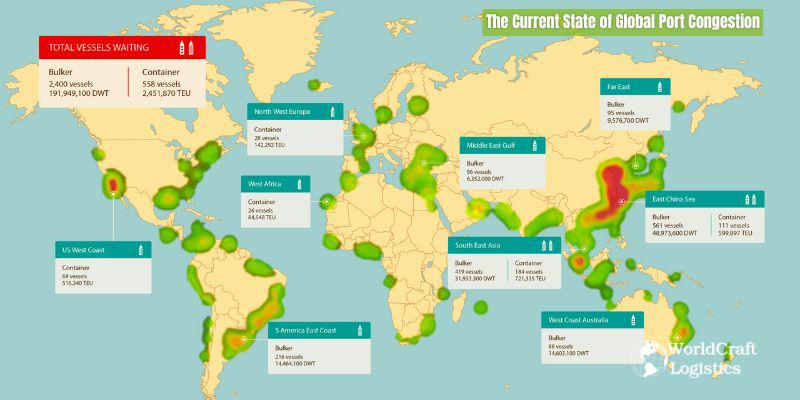
Global port congestion continues to be a significant challenge in the logistics and supply chain industries. As economies began to recover after COVID-19, the surge in demand for goods outpaced the supply chain's ability to adjust, causing backlogs and congestion.
A shift in consumer behavior, with a significant rise in e-commerce and online shopping, has led to increased import volumes, especially in major consumer markets like the United States and Europe. The holiday seasons and sales events further strain port operations as retailers stock up to meet consumer demand.
Ports are facing labor shortages due to various factors, changes in workforce demographics, and labor disputes. A lack of sufficient workers for unloading ships, transporting goods, and handling administrative tasks contributes to delays. Many ports, particularly in developing regions, struggle with outdated infrastructure that cannot accommodate the increased volume of modern container ships.
Congested hinterland connections, such as road and rail networks, exacerbate delays as goods take longer to move inland from ports.
The imbalance between the availability of shipping containers in export-oriented regions and import-dominant regions leads to inefficiencies and delays. Containers are often stuck at ports or inland depots, waiting to be repositioned to where they are needed.
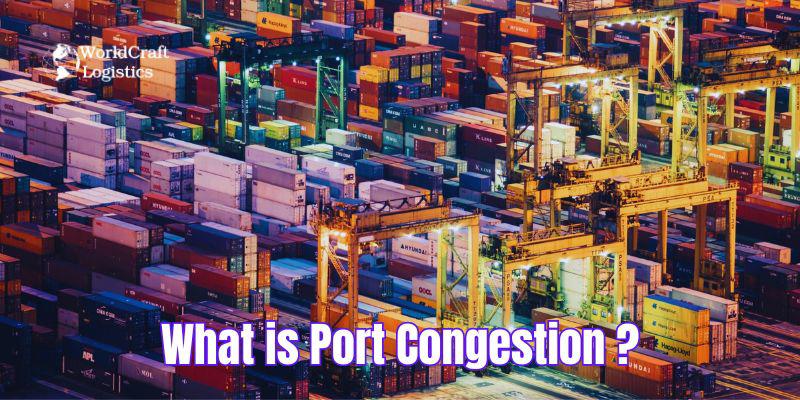
Port congestion refers to the situation where ships have to wait for an extended period to dock and unload their cargo due to the port being overwhelmed by more vessels than it can handle efficiently. This bottleneck occurs when the demand for port services exceeds the capacity of the port to process cargo in a timely manner.
Port congestion is a critical issue affecting global trade and supply chains. Addressing it requires a combination of infrastructure improvements, technological innovation, and better coordination among industry stakeholders to ensure smooth and efficient cargo handling and transportation, avoid having your goods in transit.
To better understand the operations of cargo operations at ports, the articles below are the most useful tools to help you gain more experience when transporting your shipments
👉 Shipping delays: New data, causes and ways to reduce them
👉 What is a Hub Port? The benefit and role of Hub Port in shipping
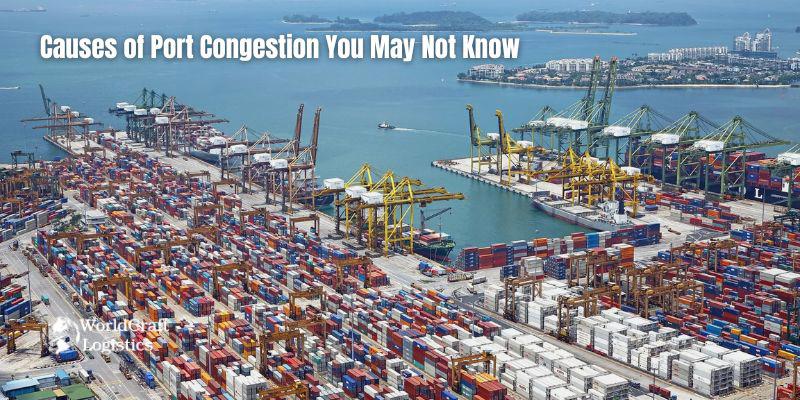
While some causes of port congestion, such as high cargo volume and labor shortages, are well-known, there are several other factors that contribute to this issue which might not be as apparent:
Events such as the COVID-19 pandemic, geopolitical tensions, or natural disasters can cause sudden shifts in global supply chains. These disruptions can lead to unexpected surges in cargo at certain ports, overwhelming their capacity to process the influx.
Although automation and digitalization are intended to improve efficiency, the transition period can initially cause disruptions. Inadequate training or technical glitches during the implementation of new systems can slow down port operations.
Sudden changes in trade policies, customs regulations, or environmental laws can create bottlenecks. For example, stricter customs inspections or new documentation requirements can delay the clearance of cargo, contributing to port congestion.
Large shipping alliances often coordinate schedules and share vessels, which can lead to simultaneous arrivals of multiple large ships. Ports may struggle to handle the sudden concentration of cargo, leading to delays.
Inefficient road, rail, or inland waterway connections can cause delays in moving cargo out of the port. Congested roads or limited rail capacity can prevent timely transportation of containers from the port to their final destinations.
The increasing size of modern container ships, while economically beneficial, can pose challenges for ports not equipped to handle them. Larger vessels require more time to load and unload, and may face difficulties navigating through port channels.
Environmental restrictions and sustainability initiatives can impact port operations. For instance, limitations on port activities to reduce air pollution or protect marine life can restrict the number of vessels that can be processed simultaneously.
Certain times of the year, such as the holiday season, can see a surge in shipping volumes. Ports that are not adequately prepared for these peaks can experience significant congestion.
Variations in the availability and pricing of bunker fuel (the fuel used by ships) can influence shipping schedules and routes. Sudden shortages or price spikes can cause vessels to reroute or delay, leading to congestion at alternative ports.
Differences in working hours, holidays, and labor practices across ports worldwide can impact the flow of goods. For example, ports operating with limited hours or during national holidays may experience backlogs when international schedules do not align.
Port congestion is a complex issue influenced by a myriad of factors beyond just high cargo volumes and labor shortages. Understanding these less obvious causes can help stakeholders develop more comprehensive strategies to mitigate congestion and improve the efficiency of global trade.
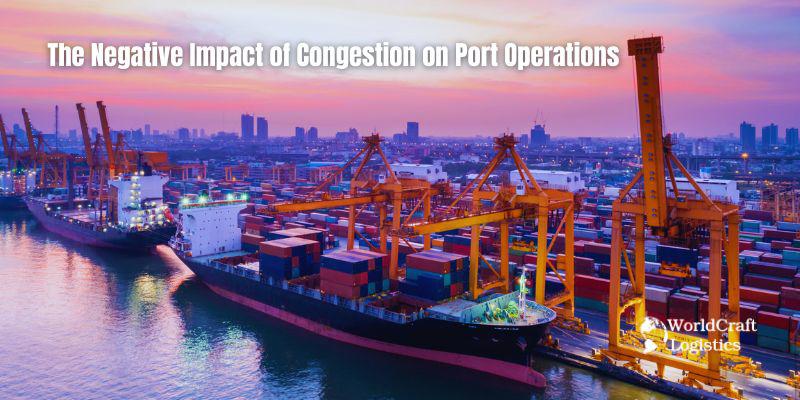
Port congestion has far-reaching negative effects on port operations, disrupting not only the flow of goods but also the overall efficiency and economic viability of ports. Here are some key impacts:
Ships often have to anchor offshore or in designated waiting areas for extended periods, sometimes days or even weeks, before they can dock. This not only delays the delivery of goods but also ties up valuable shipping assets.
Ports incur higher operational costs as they attempt to manage the backlog of vessels and containers. This includes overtime pay for workers, additional equipment usage, and increased fuel consumption for ships idling offshore.
Congestion slows down the entire cargo handling process, from unloading and storage to customs clearance and distribution. This bottleneck reduces the overall productivity of port operations, impacting the flow of goods through the supply chain.
Delays at ports cause ripple effects throughout the supply chain. Manufacturers and retailers may face stock shortages, production delays, and increased costs as they scramble to adjust their operations in response to unpredictable shipping schedules.
Shipping lines may impose congestion surcharges to offset the costs of delays, leading to higher freight rates. These increased costs are often passed on to consumers, resulting in higher prices for goods.
Continuous congestion places immense pressure on port infrastructure, including berths, cranes, storage facilities, and access roads. Over time, this can lead to accelerated wear and tear, necessitating more frequent repairs and maintenance.
Ships idling offshore emit greenhouse gasses and pollutants, contributing to environmental degradation. Increased truck and rail traffic around congested ports further exacerbates air quality issues and carbon emissions.
Delays in cargo delivery lead to customer dissatisfaction and potential loss of business. Companies relying on just-in-time inventory systems are particularly vulnerable, as they depend on timely deliveries to maintain smooth operations.
Ports may implement temporary measures to alleviate congestion, such as rerouting vessels to less congested terminals or adjusting working hours. While these measures can provide short-term relief, they often lead to operational inefficiencies and increased complexity.
The cumulative effect of delays, increased costs, and inefficiencies can result in significant economic losses for ports, shipping lines, and businesses reliant on timely cargo deliveries. These losses can impact local economies, particularly in regions heavily dependent on port activities.
Port congestion poses substantial challenges to the efficient functioning of ports and the broader supply chain. Addressing these issues requires a multifaceted approach, including infrastructure investment, technological advancements, improved coordination among stakeholders, and strategic planning to mitigate the negative impacts on port operations and global trade.
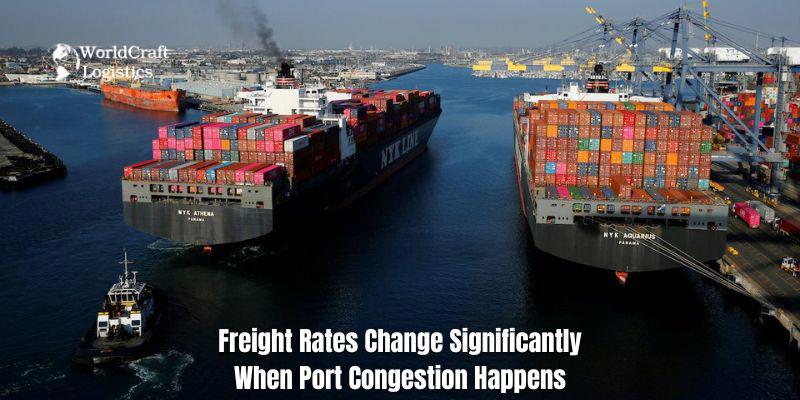
Port congestion has a direct and substantial impact on freight rates, which can fluctuate dramatically as a result.
When ports are congested, the operational costs for shipping companies rise. Ships spend more time idling offshore, burning fuel and incurring additional expenses. These costs are often passed on to shippers in the form of higher freight rates, such as: Congestion surcharges, higher inventory costs,...
Example Scenarios:
Holiday Season: In the lead-up to major holidays, consumer demand surges, and retailers stock up on inventory. Ports become congested, and freight rates can skyrocket due to increased demand and limited shipping capacity.
Disruptive Events: Natural disasters, labor strikes, or geopolitical tensions can lead to sudden port closures or operational slowdowns. Such disruptions cause immediate congestion and significant fluctuations in freight rates as the industry adjusts.
Port congestion significantly affects freight rates by increasing operational costs, creating supply and demand imbalances, and prompting shipping lines to impose surcharges. Businesses must stay informed about port conditions and be prepared to adjust their logistics strategies to manage the financial impact of these rate fluctuations effectively.
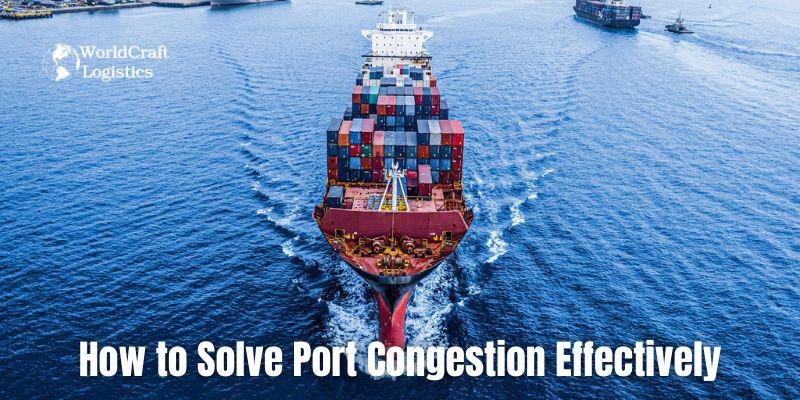
Solving port congestion effectively requires a multi-faceted approach that addresses both short-term and long-term challenges. Here are some strategies to manage and mitigate port congestion:
Streamline Processes: Implement advanced terminal operating systems (TOS) to improve scheduling, cargo handling, and overall efficiency.
Increase Automation: Use automated cranes, straddle carriers, and robotic systems to speed up cargo handling and reduce human error.
Improve Yard Management: Enhance container yard management with better stacking algorithms and real-time data.
Expand Capacity: Invest in expanding port facilities, including additional berths, storage areas, and loading/unloading equipment.
Upgrade Equipment: Modernize cranes, forklifts, and other equipment to increase throughput and reduce turnaround times.
Improve Access Roads and Rail Links: Develop better connections to reduce bottlenecks in transportation to and from the port.
Use Predictive Analytics: Leverage data analytics to forecast congestion and plan resources accordingly.
Adopt IoT Solutions: Implement Internet of Things (IoT) technologies for real-time tracking of cargo and equipment.
Enhance Communication: Improve communication systems for better coordination between port authorities, shipping lines, and trucking companies.
Stagger Ship Arrivals: Coordinate ship arrivals to avoid simultaneous docking and minimize congestion.
Implement Just-In-Time (JIT) Logistics: Encourage the use of JIT principles to synchronize cargo movements and reduce waiting times.
Enhance Coordination: Foster better collaboration between port operators, shipping lines, and logistics providers.
Streamline Clearance Procedures: Simplify customs procedures and use technology for faster processing of documentation.
Increase Inspection Efficiency: Implement risk-based inspection processes to focus resources on high-risk cargo, reducing delays for low-risk shipments.
Diversify Port Usage: Promote the use of alternative ports to distribute cargo more evenly and reduce pressure on congested ports.
Develop Regional Hubs: Establish regional logistics hubs to handle overflow and redistribute cargo more efficiently.
Adopt Green Technologies: Invest in sustainable technologies to reduce environmental impact and improve overall efficiency.
Reduce Emissions: Implement measures to reduce emissions from port operations, contributing to a healthier working environment.
Use Key Performance Indicators (KPIs): Track KPIs related to congestion, such as turnaround time, berth occupancy, and cargo dwell time.
Conduct Regular Reviews: Regularly review and adjust strategies based on performance data and emerging trends.
By implementing a combination of these strategies, ports can better manage congestion, improve operational efficiency, and enhance overall service quality.
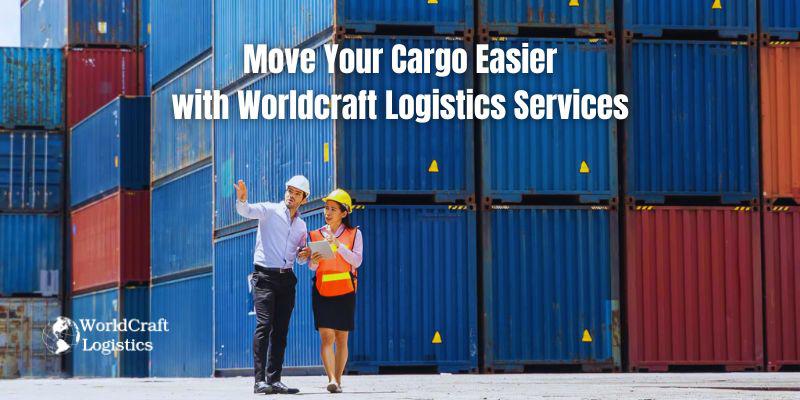
Efficient cargo handling is crucial for staying competitive. Worldcraft Logistics simplifies this process with our comprehensive services, ensuring your shipments are managed with precision and care.
Our expert team handles all customs documentation, minimizing delays and avoiding fines.
Our specialized handling ensures safe transport for sensitive or oversized shipments.
Stay updated with our real-time tracking technology, giving you full visibility of your cargo’s journey and helping you manage your inventory effectively.
Our advanced warehouse systems ensure optimized storage and fast, accurate order fulfillment, reducing lead times and enhancing customer satisfaction.
We offer tailored logistics solutions that fit your budget, helping you reduce costs while improving efficiency.
Our dedicated team provides support from planning to execution, ensuring your cargo moves smoothly and efficiently.
Ready to Simplify Your Cargo Management? Contact Worldcraft Logistics today to discover how we can enhance your supply chain.
SEO
Digital Marketing/SEO Specialist
Simon Mang is an SEO and Digital Marketing expert at Wordcraft Logistics. With many years of experience in the field of digital marketing, he has shaped and built strategies to effectively promote Wordcraft Logistics' online presence. With a deep understanding of the logistics industry, I have shared more than 500 specialized articles on many different topics.

Education
01/05/2025

Education
02/18/2025

Education
01/01/2024

Education
08/28/2024

Education
11/13/2023